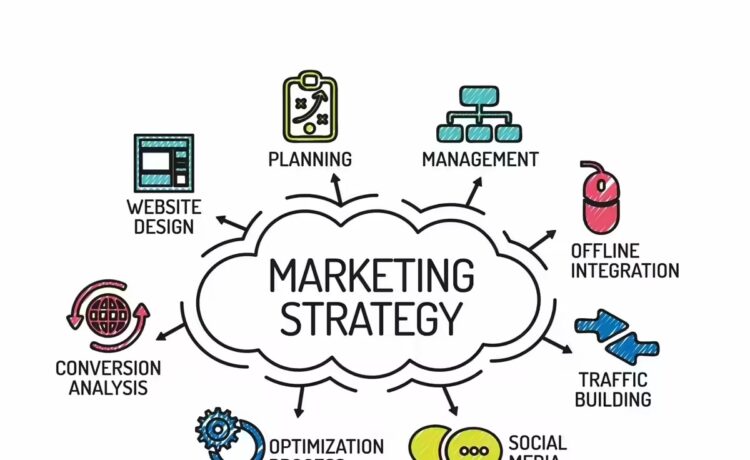In today’s competitive marketplace, achieving sustainable expansion represents a critical objective for organisations across the United Kingdom. Forward-thinking companies recognise that strategic approaches to development are essential for long-term success.
This guide explores how contemporary marketing solutions can significantly accelerate a company’s trajectory. By leveraging innovative techniques, businesses can achieve measurable results and build substantial market presence.
The content provides a comprehensive overview of how thoughtful marketing strategies contribute to sustainable business expansion. It examines the formulation of effective plans, utilisation of data analytics, and performance measurement methodologies.
Marketing professionals, business owners, and managers will find actionable insights for enhancing their strategic capabilities. The focus remains on evidence-based approaches that deliver tangible outcomes in the UK commercial landscape.
Key Takeaways
- Strategic marketing approaches are essential for sustainable business development
- Innovative solutions can significantly accelerate a company’s market presence
- Comprehensive planning contributes to long-term organisational success
- Data analytics and performance measurement provide valuable insights
- Evidence-based methodologies deliver tangible results in competitive markets
- Professional guidance enhances strategic capabilities for marketing teams
Introduction: The Importance of Brand Growth
Strategic market positioning forms the foundation upon which sustainable business achievements are built. A company’s expansion efforts directly influence revenue streams and competitive standing. This development creates significant advantages in crowded commercial environments.
Successful growth extends far beyond basic recognition metrics. It encompasses customer consideration, purchasing decisions, and long-term loyalty. These factors collectively enhance customer lifetime value across diverse audience segments.
The compounding benefits of strategic development include premium pricing capabilities and improved customer retention. Organisations also experience reduced acquisition costs over time. This creates a virtuous cycle of commercial success.
Different companies prioritise their objectives based on market position and strategic goals. The evolving UK commercial landscape demands adaptive approaches. Understanding brand equity becomes essential for long-term viability.
Changing consumption patterns and digital behaviours require thoughtful strategies. People’s expectations continue to evolve rapidly. This necessitates innovative approaches to market development and customer engagement.
Ultimately, strategic positioning serves as both an outcome and driver of commercial success. It connects tactical efforts with overarching business objectives. This integration ensures meaningful progress and measurable results.
Understanding Brand Development and Strategy
The journey toward market distinction begins with a deliberate process of crafting meaningful corporate identity elements. This systematic approach combines strategic thinking with creative execution to establish lasting market presence.
Organisations must view identity formation as an investment rather than an expense. The returns manifest through customer loyalty and competitive advantage.
Key Components of Brand Development
Effective identity creation starts with a clear strategy that defines market positioning. This foundation guides all subsequent decisions and actions.
Visual elements like logo design and colour schemes create immediate recognition. They serve as the visual shorthand for corporate values and promises.
A compelling brand statement articulates the organisation’s unique value proposition. This messaging framework ensures consistency across all communication channels.
Techniques for Strategic Brand Building
The building process requires careful attention to differentiation strategies. Companies must identify what makes their offering distinct from competitors.
Consistency across customer touchpoints reinforces identity recognition. Every interaction should reflect the established positioning framework.
Market research provides critical insights for refining the development approach. Understanding audience perceptions helps shape more effective strategies.
Successful implementation transforms abstract concepts into tangible customer experiences. This creates the emotional connections that drive long-term loyalty.
Crafting a Marketing Strategy for Business Success
Developing a powerful marketing strategy requires a structured process that connects tactical actions with overarching ambitions. This systematic approach ensures every marketing effort contributes directly to organisational goals.
The initial step involves thorough situational analysis. Companies must assess their market position, competitor landscape, and target audience characteristics. This research forms the foundation for informed decision-making.
Steps to Create an Effective Marketing Plan
Creating an effective marketing plan follows a logical sequence. The first stage establishes clear, measurable objectives that support broader business aims. These targets should be specific and time-bound.
Budget allocation represents the next critical step. Resources must be distributed strategically across different marketing channels. This ensures optimal return on investment throughout the campaign.
Tactical selection completes the planning process. Marketers choose specific activities that align with their strategy and available resources. Each tactic should have clear performance indicators.
How to Reap the Benefits of Comprehensive Planning
Comprehensive planning delivers significant advantages for organisations. Improved resource allocation ensures marketing budgets achieve maximum impact. Teams work more efficiently when priorities are clearly defined.
The planning process creates better alignment across departments. Everyone understands how their role contributes to overall success. This cohesion enhances programme effectiveness and measurement capabilities.
Systematic strategy development positions companies for sustainable advancement. It creates competitive advantages through consistent messaging and coordinated execution. This approach supports long-term organisational development.
Leveraging Data and Analytics in Marketing
Modern marketing professionals increasingly rely on data-driven insights to guide their strategic decisions and optimise campaign performance. This analytical approach transforms marketing from guesswork to evidence-based practice.
Interpreting Key Performance Metrics
Effective marketing strategy depends on understanding key performance indicators. These metrics provide clear signals about campaign effectiveness.
Regular analysis of these measurements helps teams identify what works. This enables timely adjustments to improve results.
| Metric Type | Key Indicators | Strategic Value |
| Acquisition Metrics | Clicks, new-to-brand orders | Measures audience reach and first-time engagement |
| Visibility Metrics | Top-search impression share, viewable impressions | Assesses market presence and advertising exposure |
| Loyalty Indicators | Repeat purchases, brand searches | Evaluates customer retention and recognition |
| Financial Performance | Return on advertising spend (ROAS) | Quantifies marketing investment efficiency |
Utilising Consumer Data for Strategic Insights
Consumer research provides deep understanding of people’s behaviours and preferences. This information shapes more effective marketing development.
Data analysis reveals which approaches resonate with target audiences. This insight drives continuous improvement in marketing services over time.
Strategic use of analytics supports informed decision-making. It helps organisations allocate resources more effectively for better outcomes.
Measurement Metrics: Tracking Your Brand’s Performance
Effective performance tracking involves selecting the right metrics that align with specific business objectives and marketing channels. Organisations measure success through various indicators depending on their goals.
Regular assessment of these measurements provides valuable insights. Teams can identify successful strategies and areas needing improvement.
Evaluating Website Traffic and Social Media Engagement
Website analytics offer crucial data points for understanding audience behaviour. Traffic volume and referral sources reveal how people discover the organisation.
Social media engagement metrics measure audience interaction and content resonance. These include shares, comments, and sentiment analysis.
The table below compares key measurement categories:
| Metric Category | Key Indicators | Measurement Tools | Strategic Value |
| Website Traffic | Volume, bounce rate, session duration | Google Analytics, heat maps | Measures audience reach and content effectiveness |
| Social Media Engagement | Likes, shares, comment sentiment | Platform analytics, social listening tools | Assesses brand resonance and community building |
| Sales Performance | Conversion rates, average order value | CRM systems, e-commerce platforms | Quantifies commercial impact and revenue generation |
| Customer Loyalty | Repeat purchases, referral rates | Customer surveys, retention analytics | Evaluates long-term relationship strength |
Comprehensive brand tracking metrics help organisations understand their market position over time. Regular review processes support continuous improvement.
Establishing clear measurement frameworks ensures meaningful progress tracking. This approach transforms data into actionable insights for strategic optimisation.
Innovative Tools and Techniques in Brand Building
Technological advancements are reshaping how organisations establish their market presence. Modern identity creation benefits from sophisticated platforms that enhance campaign effectiveness.
Artificial intelligence now powers many advertising solutions. These systems analyse consumer behaviour to optimise messaging. Programmatic platforms automate media buying for better efficiency.
Emerging Technologies in Advertising
Video content has become essential for corporate identity development. Production tools enable immersive experiences that capture audience attention. Distribution platforms ensure content reaches target viewers effectively.
Personalisation tools create meaningful connections at scale. They help organisations present relevant products to specific audience segments. This approach maintains operational efficiency while improving engagement.
Analytics platforms provide real-time performance monitoring. Marketers can track how their building efforts resonate with consumers. These insights support rapid strategy adjustments.
Implementation requires careful evaluation of available resources. Companies should select tools that align with specific objectives. The right technology stack enhances both digital and physical place interactions.
Reap London Case Studies of Marketing Excellence
Examining real-world success stories provides invaluable insights into effective marketing practices. These concrete examples demonstrate how strategic approaches deliver measurable results across diverse sectors.
This analysis explores specific scenarios where organisations achieved significant advancement through carefully planned initiatives. Each case offers actionable lessons for marketing professionals.
Real-World Success Stories
The methodology employed by Reap London showcases innovative approaches to market development challenges. Their work illustrates how tailored strategies create meaningful impact for different types of organisations.
Case studies span various development stages, from emerging companies establishing presence to established entities seeking revitalisation. Each situation required unique strategic frameworks.
Successful examples demonstrate how companies adapt their approach to specific market conditions and competitive landscapes. The strategic decisions behind each achievement reveal important patterns.
Detailed analysis examines what made each case study effective, including execution quality and measurement techniques. These real-world examples provide transferable lessons for other organisations facing similar challenges.
The common thread across all successful cases is strategic alignment with business objectives. This connection ensures marketing efforts contribute directly to organisational success.
How-To Guide for Enhancing Brand Engagement
Creating meaningful connections with your audience requires a deliberate focus on content quality and interaction design. This guide outlines practical steps for improving engagement across all customer touchpoints.
Engaging Content Strategies and Customer Interaction
The first step involves deep audience analysis. Understanding preferences and behaviours ensures content resonates effectively. This alignment is crucial for building lasting connections.
Develop a structured content calendar. This framework guides the creation and distribution of relevant material. A consistent schedule maintains audience interest and anticipation.
Focus on creating interactive experiences. Transform passive viewers into active participants. This approach fosters a stronger sense of community around your products.
Organisations can Reap significant benefits from systematic engagement improvements. Measuring performance data allows for continuous refinement of your strategies. This data-driven approach ensures ongoing optimisation.
Implementing these steps creates a virtuous cycle of interaction. Each positive experience strengthens the overall relationship. This process delivers measurable improvements in key engagement metrics.
Digital Advertising, Content, and Social Media Trends
Digital platforms are transforming how companies communicate with their customers in fundamental ways. These changes affect audience behaviours and consumption patterns across market segments. Organisations must understand these shifts to maintain effective engagement.
Platform algorithms and advertising capabilities evolve continuously. This requires strategic agility from marketing teams. They must adapt their approaches to remain visible to target audiences.
Impact of Evolving Digital Platforms
Video content now dominates many digital channels. Its rising popularity demands adjusted advertising strategies. Companies must leverage this format effectively to capture attention.
Content consumption has fragmented across numerous platforms. This necessitates sophisticated cross-channel strategies. Marketers need coordinated approaches to reach their audiences effectively.
Authenticity and transparency have become valued characteristics. Modern audiences increasingly prefer genuine connections over polished advertising. This trend influences how organisations develop their communications.
The digital marketplace has democratised presence building. Simultaneously, competition for audience attention has intensified across every place. Strategic anticipation of platform changes ensures advertising remains effective as the landscape evolves.
These developments create both challenges and opportunities. Understanding current trends helps organisations navigate the changing digital environment successfully.
Optimising Brand Growth through Targeted Approaches
Sophisticated frameworks now offer organisations structured pathways to optimise their market position. Kantar’s Blueprint for Brand Growth represents one such evidence-based approach. This methodology draws from analysis of 6.5 billion consumer data points collected over ten years.
Tactical Marketing Strategies for the UK Market
The framework identifies being meaningfully different as the core growth driver. This concept focuses on expanding relevance while maintaining distinctiveness. It requires understanding what makes an offering uniquely valuable to people.
Three growth accelerators support this differentiation strategy. Each addresses specific aspects of market presence and expansion. The table below compares their focus areas and strategic applications:
| Growth Accelerator | Primary Focus | Strategic Application |
| Predispose More People | Building mental availability through exposures | Strengthening preference before purchase decisions |
| Be More Present | Optimising customer journey touchpoints | Converting predisposition through distribution and pricing |
| Find New Space | Identifying incremental opportunities | Expanding into new categories or services |
Leveraging Consumer Insights for Growth
Consumer data reveals which approaches resonate with target audiences. This insight helps companies allocate resources more effectively. Strategic optimisation becomes possible through continuous learning.
The UK market presents specific cultural and regulatory considerations. Tactical approaches must account for these local factors. Successful implementation increases sales through better alignment with consumer needs.
Organisations can develop more effective strategies by applying these principles. The framework provides a clear structure for market development efforts. This systematic approach supports sustainable advancement.
Advanced Strategies in Customer Engagement and Sales Conversion
Moving beyond basic customer interactions requires sophisticated approaches that transform casual browsers into committed buyers. Organisations achieve this through advanced personalisation and experience enhancement techniques.
Personalisation and Experience Enhancement Techniques
Sophisticated personalisation leverages customer data to create tailored experiences. These strategies make people feel uniquely valued while remaining scalable across large audience segments.
Experience enhancement focuses on improving every customer interaction. This spans from initial awareness through purchase to post-sales relationship building. The goal is creating seamless journeys that naturally guide toward conversion.
Effective techniques include reducing friction in the sales process. Companies identify barriers that prevent people from completing purchases. They then implement solutions that improve customer flow toward sales completion.
Personalisation technologies enable relevant product recommendations and offers. They help present services in ways that increase engagement. This approach significantly boosts sales effectiveness.
Organisations must balance automation with human touchpoints. The ideal mix creates experiences that feel personal yet remain operationally efficient. This balance is crucial for sustainable sales growth.
Frameworks for measuring experience quality and conversion performance enable continuous optimisation. These measurement strategies ensure customer engagement approaches deliver maximum sales impact.
Exploring New Marketing Channels and Business Opportunities
Organisations seeking to expand their market influence must continually explore fresh avenues for reaching customers. This proactive approach helps companies diversify their revenue streams and connect with broader audience segments. Careful evaluation of emerging platforms creates significant advantages.
Diversifying Your Marketing Mix
Successful diversification begins with assessing how new channels align with core business objectives. Companies should examine factors like audience demographics and content format compatibility. This ensures new opportunities strengthen rather than dilute market positioning.
Strategic planning helps manage risk when testing unfamiliar platforms. Marketers can develop a phased programme that allocates limited resources initially. This approach allows for performance measurement before larger commitments.
Expanding into complementary services or products represents another growth pathway. Companies can leverage existing reputation while reaching new customer groups. Partnerships often provide efficient access to untapped audiences and distribution networks.
Systematic testing with clear benchmarks is essential for evaluating new channels. Organisations should measure results against established marketing activities. This data-driven approach identifies the most promising opportunities for further investment.
Conclusion
Synthesising the various components of effective marketing demonstrates how systematic approaches yield measurable outcomes. This guide has outlined the critical connection between strategic planning and sustainable business advancement.
Organisations that implement these frameworks position themselves to Reap substantial competitive advantages. The fundamental point remains that success requires consistent execution and continuous measurement across all activities.
Viewing marketing as an ongoing strategic commitment rather than short-term initiative creates lasting value. Businesses should apply these learnings in a way that aligns with their specific context and resources.
The final statement of this guide emphasises integrated planning from development through measurement. By implementing these strategies systematically, companies can achieve transformative results in competitive markets.
FAQ
What is the primary objective of a marketing strategy?
The main aim is to outline a clear plan for promoting a company’s products or services. It focuses on reaching target audiences and achieving specific business objectives, such as increasing sales or market share.
How does data analytics contribute to business development?
Analytics provide valuable insights into consumer behaviour and campaign performance. This information helps businesses refine their approach, improve customer experience, and make informed decisions for future planning.
What role does content play in building audience engagement?
High-quality, relevant content is essential for attracting and retaining an audience. It establishes authority, fosters trust, and encourages interaction, which are vital for long-term relationship building.
Why is it important to track website traffic and social media metrics?
Monitoring these metrics allows a company to measure the effectiveness of its online presence. It helps identify what resonates with audiences, enabling continuous improvement of digital advertising and content strategies.
Can you give an example of an innovative tool used in advertising?
Programmatic advertising is a key example. This technology uses algorithms to automate the buying and placement of ads, making the process more efficient and allowing for highly targeted campaigns.
What are the benefits of diversifying a marketing mix?
Using a variety of channels, such as digital platforms, traditional media, and experiential events, helps reach a broader audience. It also reduces risk by not relying on a single method for lead generation.
How can personalisation enhance the customer experience?
Personalisation makes interactions feel unique and relevant to the individual. This can significantly increase satisfaction, improve conversion rates, and foster loyalty towards the company’s services.






